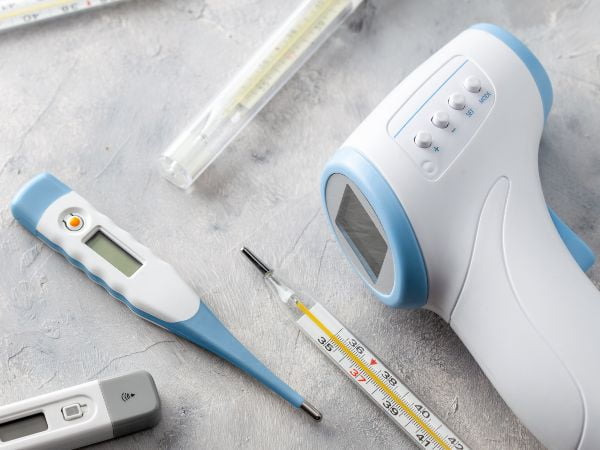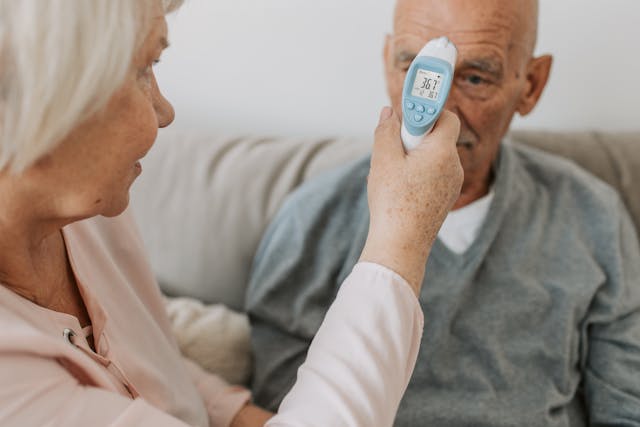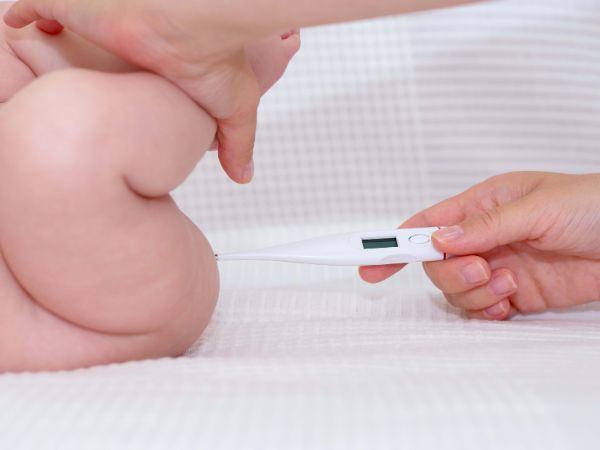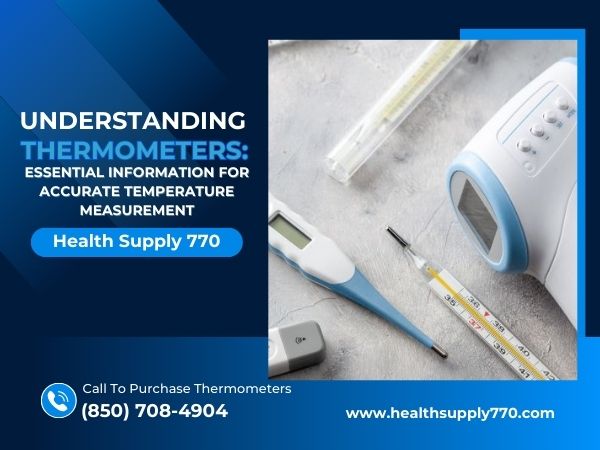Thermometers are essential medical devices needed for measuring body temperature. Many different types of thermometers are available including oral thermometers, rectal thermometers, and tympanic or ear thermometers, among others which differ in construction but are employed for the same purpose. Understanding thermometers before using them is good it can reduce the chances of taking an inaccurate temperature reading.

In this article, let us dive into why is it essential to understand thermometers, their features, the latest technologies, as well as the importance of taking an accurate temperature reading.
Importance of Measuring Temperature with Accuracy
Before understanding thermometers, it is important to comprehend why these are essential in healthcare. When a patient needs a medical examination, the first thing a physician does is take body temperature using a thermometer. This is because temperature changes are often a sign of an illness in the body.
Normal body temperature in human body lies within the range of 97.5°F to 98.9°F or 36.4°C to 37.2°C.
Johns Hopkins Medicine
Illnesses Associated with High Body Temperature
If your body temperature is above the normal temperature range, there is a chance that any of the following illnesses are present in your body:
● Flu
● Cold
● Sore throat
● Ear infections
● Sinus infections
● Bronchitis (Inflammation of the bronchi)
● Tuberculosis (TB)
● Pneumonia
● Appendicitis (Swelling of the appendix due to an infection)
● Skin infections
● Osteomyelitis (Bone-related infections)
Illnesses Associated with Low Body Temperature
If you have a body temperature that is lower than the normal body temperature, there is a probability that you are experiencing hypothermia, a condition associated with extremely low temperature. Prolonged hypothermia can lead to irregular heart thus resulting in heart failure or even death.
Hence, by measuring body temperature, one can find out the cause behind these fluctuations and start a suitable treatment early on, and understanding thermometers as well as their proper use assists in this process.

Thermometers: Features and Technologies
Once you have purchased it, the next thing you need to do is learn how to employ a thermometer. However, understanding thermometers can be a little tricky if their features are not easy enough for everyone to get them.
Therefore, one should look for a device that is not only uncomplicated to operate but also has all the necessary features which are needed for accurate temperature measurement. Some of these features as well as necessary technologies have been enlisted as follows:
Features
When selecting a thermometer, it’s crucial to understand the features that make it reliable and user-friendly. These features ensure accurate readings, ease of use, and safety, making them essential for both medical professionals and home users.
● Easy Operation
A good thermometer should be easy to operate for everyone. The steps for getting reliable temperature readings should also be minimal. The previously employed mercury thermometers were a little difficult to use as some people could not see the level of mercury in the glass body. However, the latest digital thermometers have digital LED displays that show temperature readings clearly.
● Safety First
A thermometer should also be safe to use. It should not be risky for the user to place it in the oral cavity or the rectum. Understanding thermometers and their safety features highlights the importance of a plastic body over a glass one. The mercury thermometers have been discontinued because there was a higher chance of them getting broken in the mouth leading to cuts or mercury ingestion.
● High Sensitivity
A good thermometer should be highly sensitive to minor temperature changes. Many electronic thermometers have high sensitivity. Similarly, rectal thermometers are also known for detecting smaller temperature changes with accuracy. Hence, understanding thermometers for their features is essential before making a purchase.
Technologies
Modern thermometers come equipped with advanced technologies to enhance their functionality and user experience. Understanding these technologies can help in selecting the right thermometer that meets specific needs.
● Fever Alarm System
When it comes to understanding thermometers and their use, a feature that makes the process easy is the fever alarm system. As soon as the thermometer detects a higher-than-normal temperature, it sets off an alarm to indicate the abnormally high temperature readings. This way, even the elderly who might have problems while reading the value from the LED display get to know if they require treatment.
● Celsius and Fahrenheit Scales
As some people might have a preference regarding the scale in which they want to take their temperature, understanding thermometers that only display readings in one temperature scale might become difficult. Therefore, the newer thermometers have a dual scale feature which enables the users to choose if they want their temperature in Celsius (°C) scale or in Fahrenheit (°F) scale.
● Auto Switch Off Feature
When you are done using a thermometer and forget to switch it off manually, you don’t have to worry about the batteries being wasted as almost all digital thermometers have an auto shut-off feature that switches the device off automatically when not in use. Therefore, understanding thermometers and their features allows you to use them to your advantage.
● PerfecTemp Technology
A thermometer should also be able to adjust itself according to the ambient temperature. Therefore, the PerfecTemp technology has been introduced which allows the device to self-adjust based on the placement of the temperature sensor. Hence, understanding thermometers in a way to know about these specifications gives the advantage of using the device for the best results.

Using a Thermometer: Do’s and Don’ts

Understanding thermometers is one thing but to use them correctly, one needs to know the following do’s and don’ts:
Do’s
● In the case of oral thermometers, take a reading after at least 30 minutes of eating or drinking.
● Wait for at least 20 seconds before placing the thermometer once the device indicates it is ready to use.
● The thermometer should be positioned properly before taking the reading.
● Keep the thermometer steady while using it.
● Always clean and disinfect your thermometer after every use.
● Use soapy water or rubbing alcohol for washing thermometers.
Don’ts
● Don’t open your mouth or breathe heavily while using an oral thermometer.
● Don’t use the same thermometers for oral and rectal use.
● Don’t use a thermometer in multiple individuals without cleaning it properly.
● Don’t expose the thermometer to direct sunlight.

Conclusion
Medical thermometers are diagnostic tools for taking a patient’s body temperature. Taking an accurate reading is necessary as it can indicate the underlying disease conditions that might be responsible for extremely high or low temperatures.
Nowadays, the latest thermometers come with many new features and encompass multiple useful technologies. Therefore, understanding thermometers before using them gives the advantage of taking readings with fewer inaccuracies.
While choosing the right thermometer for your family, reliable vendors like Health Supply 770 should be approached as they ensure the provision of quality products and offer satisfactory services.
References

PhD Scholar (Pharmaceutics), MPhil (Pharmaceutics), Pharm D, B. Sc.
Uzma Zafar is a dedicated and highly motivated pharmaceutical professional currently pursuing her PhD in Pharmaceutics at the Punjab University College of Pharmacy, University of the Punjab. With a comprehensive academic and research background, Uzma has consistently excelled in her studies, securing first division throughout her educational journey.
Uzma’s passion for the pharmaceutical field is evident from her active engagement during her Doctor of Pharmacy (Pharm.D) program, where she not only mastered industrial techniques and clinical case studies but also delved into marketing strategies and management skills.


















